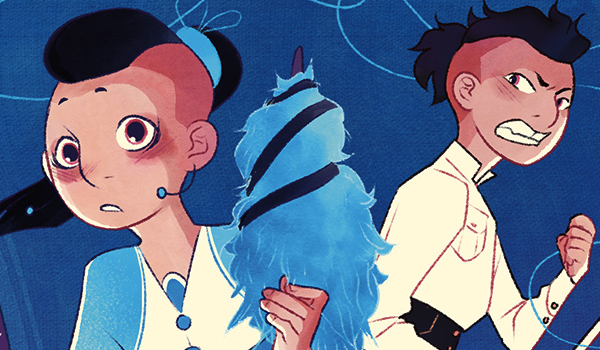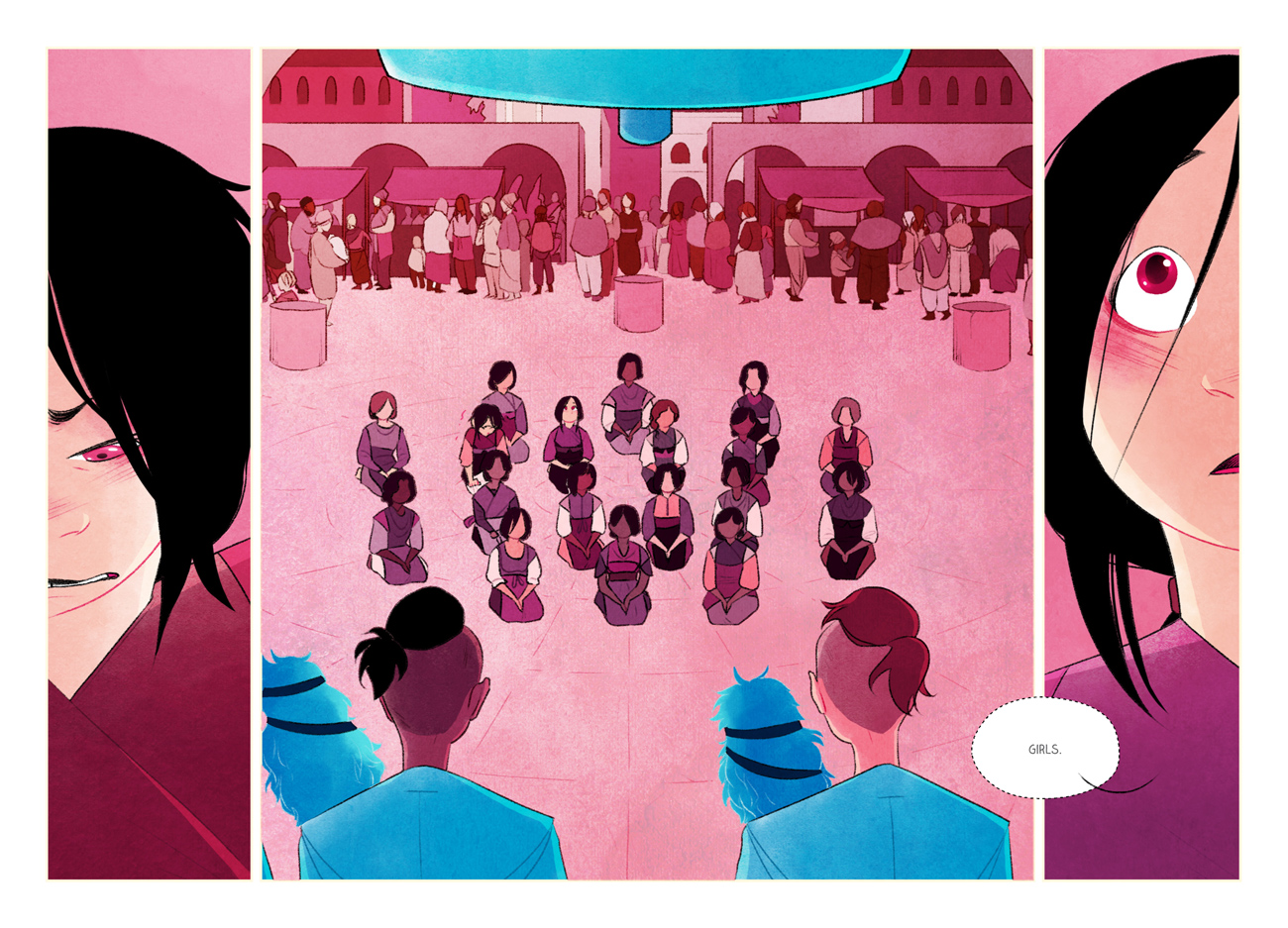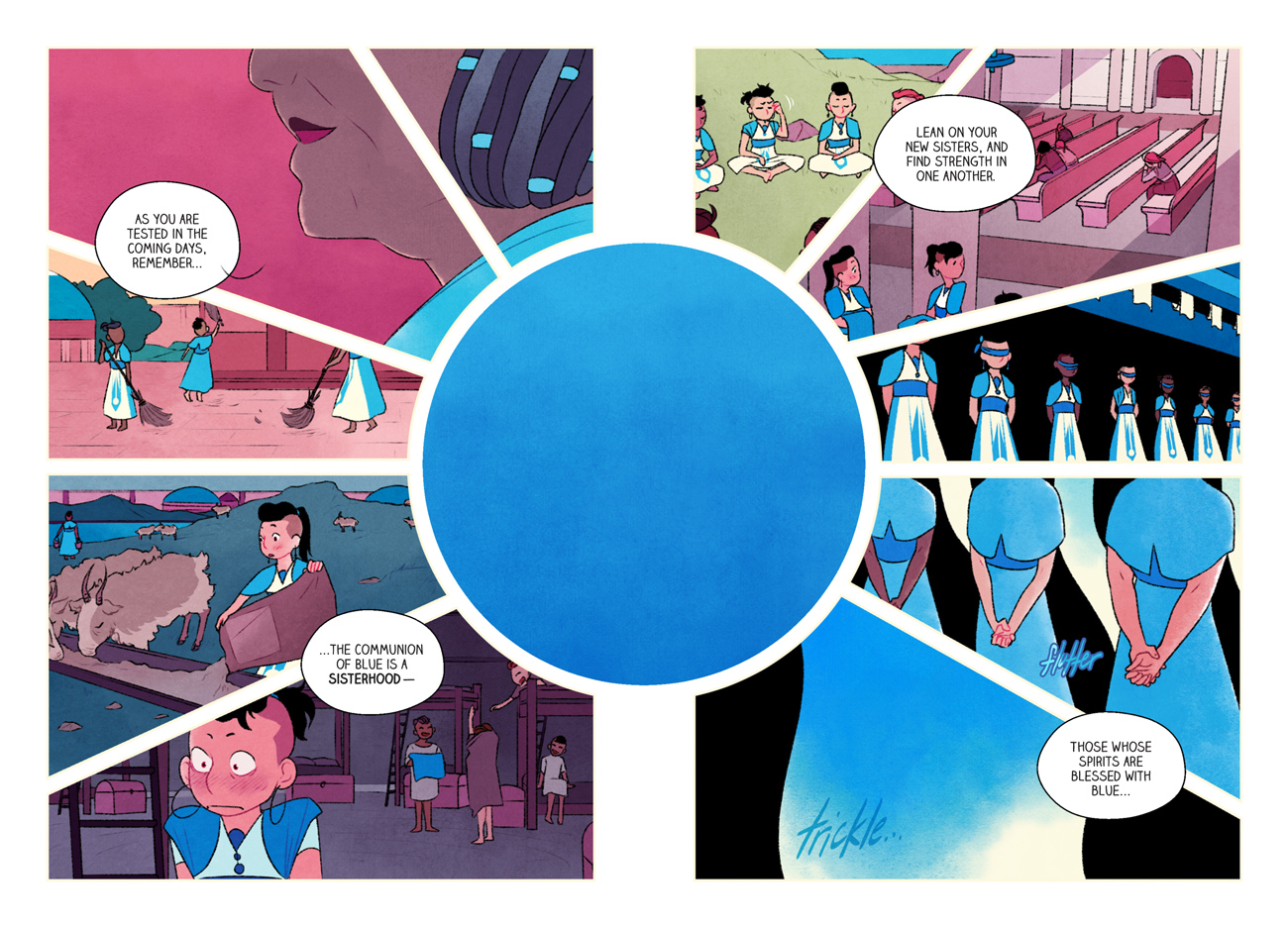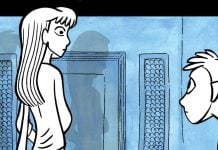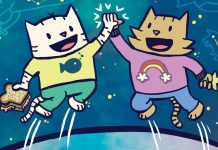Welcome to Queerness In Comics, a bi-weekly column by Avery Kaplan, which will explore queer representation in comics. This week, Avery is exploring The Deep and Dark Blue, released in January 2020.
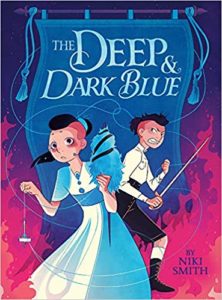
Publisher: Little, Brown
In Niki Smith’s middle-grade graphic novel The Deep & Dark Blue, a royal coup sends the surviving heirs of House Sunderlay into hiding. In order to escape detection by their enemies, twins Hawke and Grayson must assume the disguise of young girls being initiated into the Communion of the Blue, an order of magic-using women who live a mysterious life within a high-walled compound at the center of the city.
But while The Deep & Dark Blue may be set in the fantasy kingdom, it uses its fantastical elements to explore a very familiar experience for transgender individuals: the process of grappling with the realization that the gender that was assigned at birth may not be an accurate designation.
In The Deep & Dark Blue, the realization is spurned by necessity: the twins are forced to present themselves as girls in order to avoid detection from their enemy, who hopes to kill them in order to assume control of the royal lineage. By altering their gender presentation, the twins are able to successfully avoid detection.
Gender Foils
However, by having the story follow a pair of twins, one of which is cisgender, the story is able to examine the different reactions each character has to present themselves as girls.
As Smith alluded to in an interview with the Beat, the idea of a character performing a gender with which they are unfamiliar is not unprecedented; in fact, it’s something of a narrative convention. In stories like Mulan, in which the protagonist alters their gender presentation, there are often distinctly queer thematic undertones and even moments that flirt with the idea of same-gender attraction.
However, at the conclusion of these narratives, the protagonist has almost always returned to their original gender presentation, which the story frequently affirms as “correct.” The character affirms that they are cis-gendered and heteronormative, and a clichéd moral about how the “grass is always greener” or “being satisfied with the way things are” frequently being touted as the resolution to the story’s unstable situation.
In some situations, this will be the outcome when a person tries a different method of gender presentation, and there is certainly nothing wrong with that. There should be space for people to question their gender, and to try different gender presentations firsthand, and there is nothing wrong with realizing that the gender assigned at birth aligns with one’s own gender. However, when every such narrative concludes with the protagonist affirming the gender they were assigned at birth, it erases the experiences of those of us who have a different relationship with gender.
Having a pair of twins allows the story to use the two characters as foils for one another in this respect. While Hawke is uncomfortable and frequently laments having to present himself as a girl, Grayce finds that expressing herself as a girl makes a sort of intrinsic sense.
The Subtext Matters
Trans kids recognize more than they are given credit for, and this includes the subtextual message that accompanies the fact that the majority of these stories exclusively featured the protagonist returning to their “original” state: the only valid expression of gender can be the one that matches the gender one was assigned at birth.
There’s even an in-universe example of the phenomena of trans kids picking up on more than they are given credit for in The Deep & Dark Blue: early in the text, when the twins run into their grandfather, he tells them that they should be greeting the solstice sun as “men, not children.” While the message sent by their grandfather is intended to be innocuous, free from negative subtext, the reaction Grayce has to the statement – to balk at the notion of performing manhood – is an example of the many instances of trans kids being saddled with baggage by an adult without bad intentions.
While it’s important for some kids to know that they’re fine they way they are, it’s important for trans kids to know that it will work out if they decide to transition the way they express their gender, as well. Unfortunately, while there are plenty of existing texts to support those who learn that the gender they were assigned at birth is accurate, there are considerably fewer that communicate the trans experience of confronting and coming to terms with the realization that the gender you were assigned at birth doesn’t match.
The Deep & Dark Blue
While there are plenty of instances of protagonists adopting a different gender expression as a major plot element of the story, there are fewer instances of the protagonist realizing they are trans as a result of the experience and embracing their true selves as a result. Fortunately, in The Deep & Dark Blue, that story is told (along with the story of Grayce’s twin brother, who has a similar experience as she does but who learns that he is most comfortable performing the gender he was assigned at birth).



